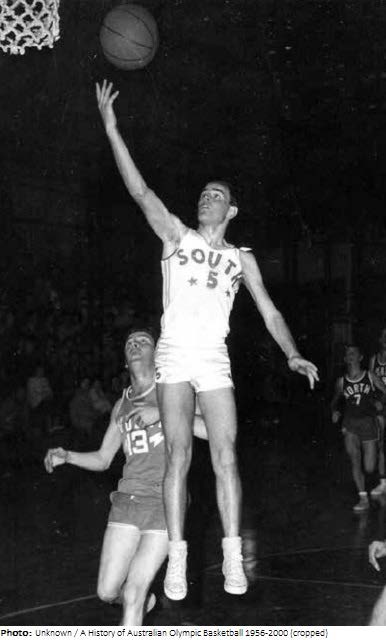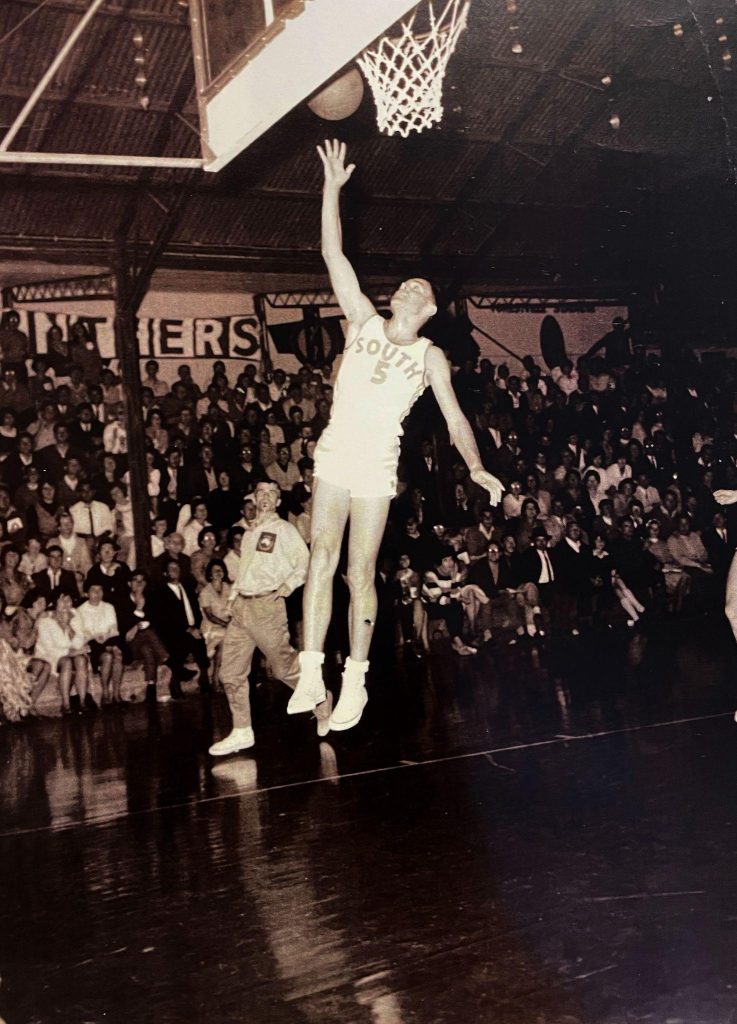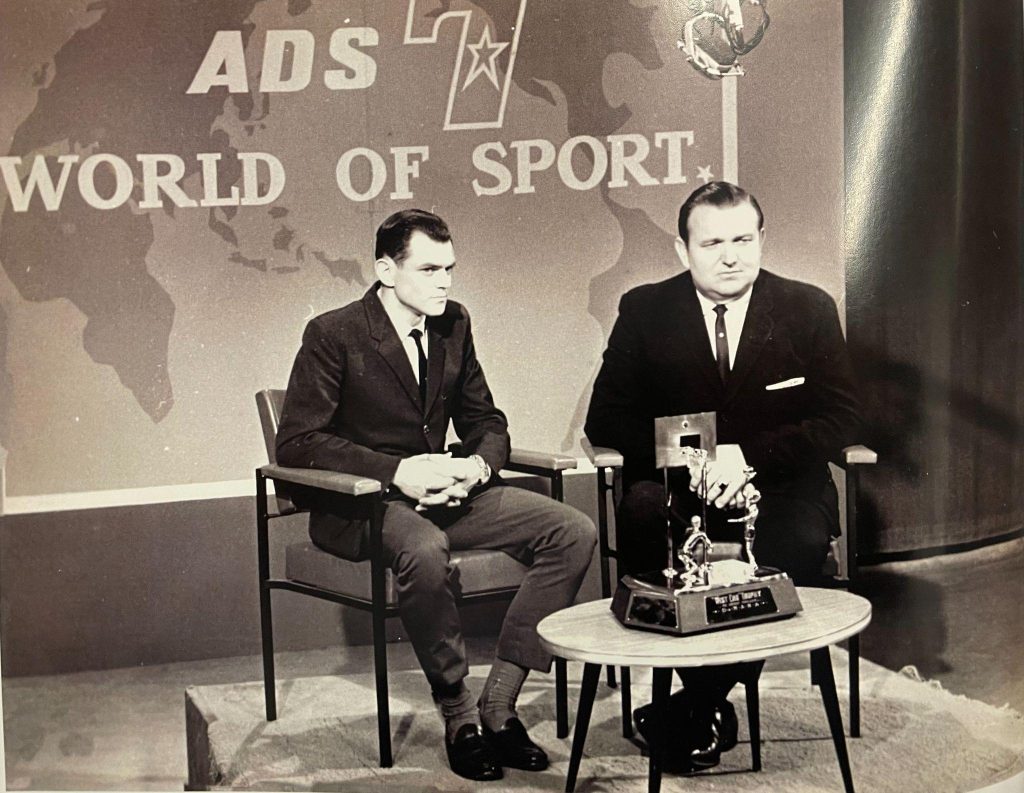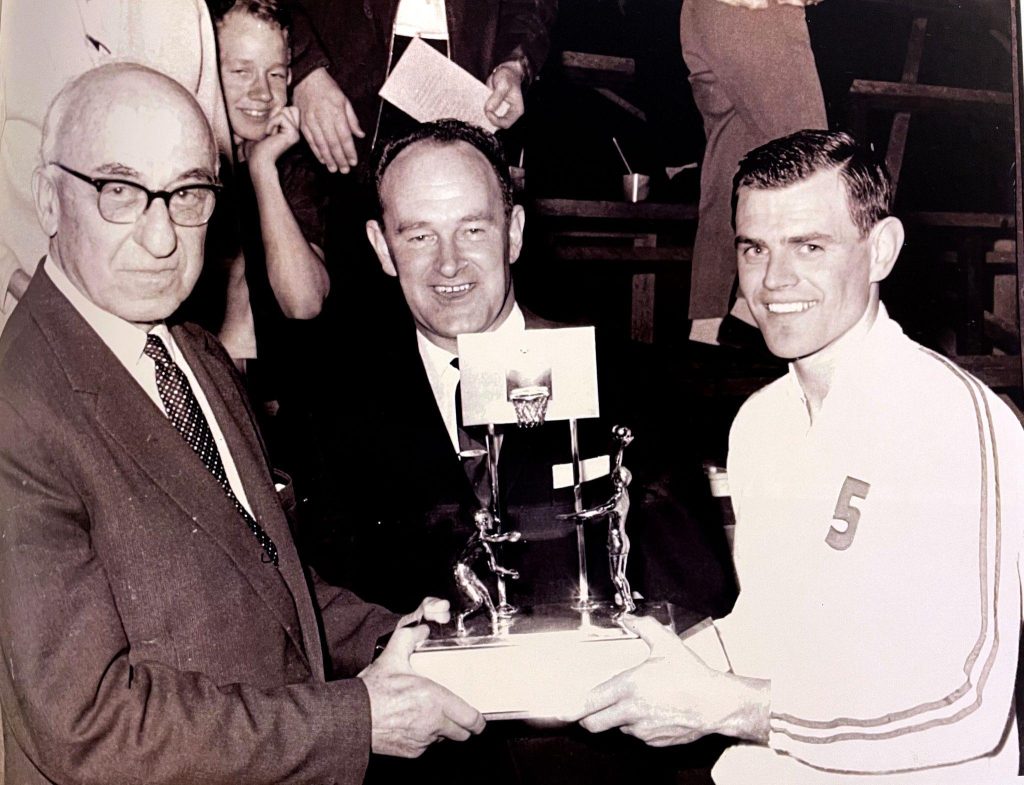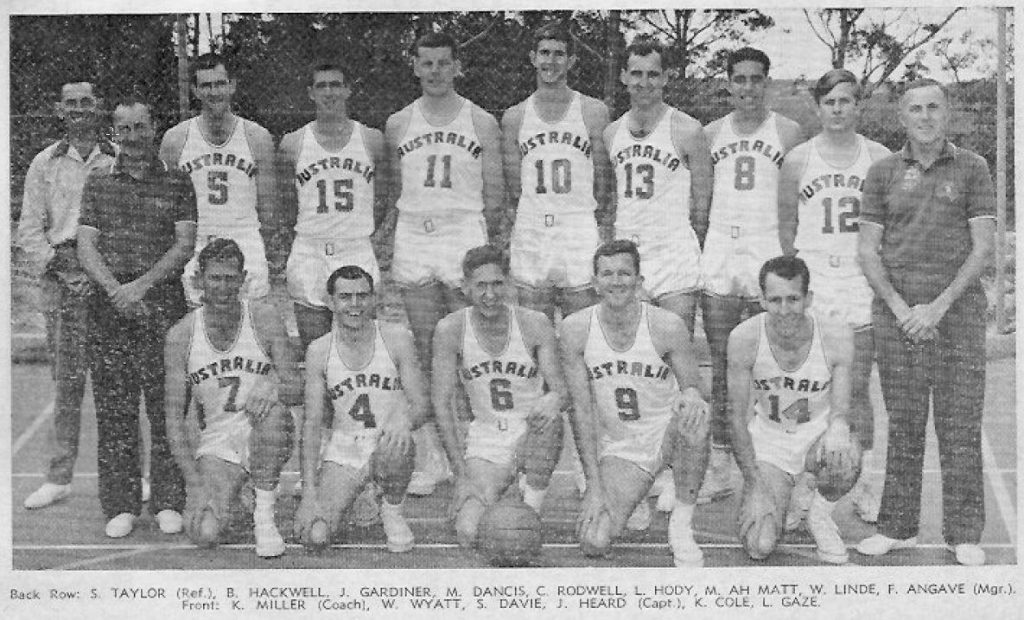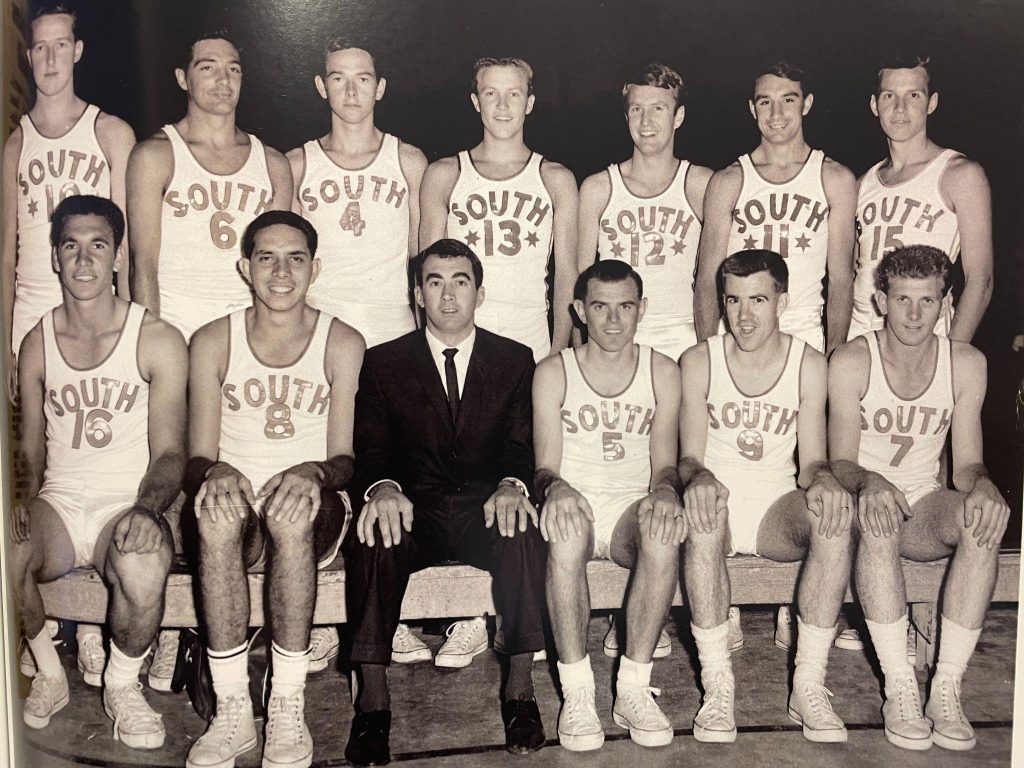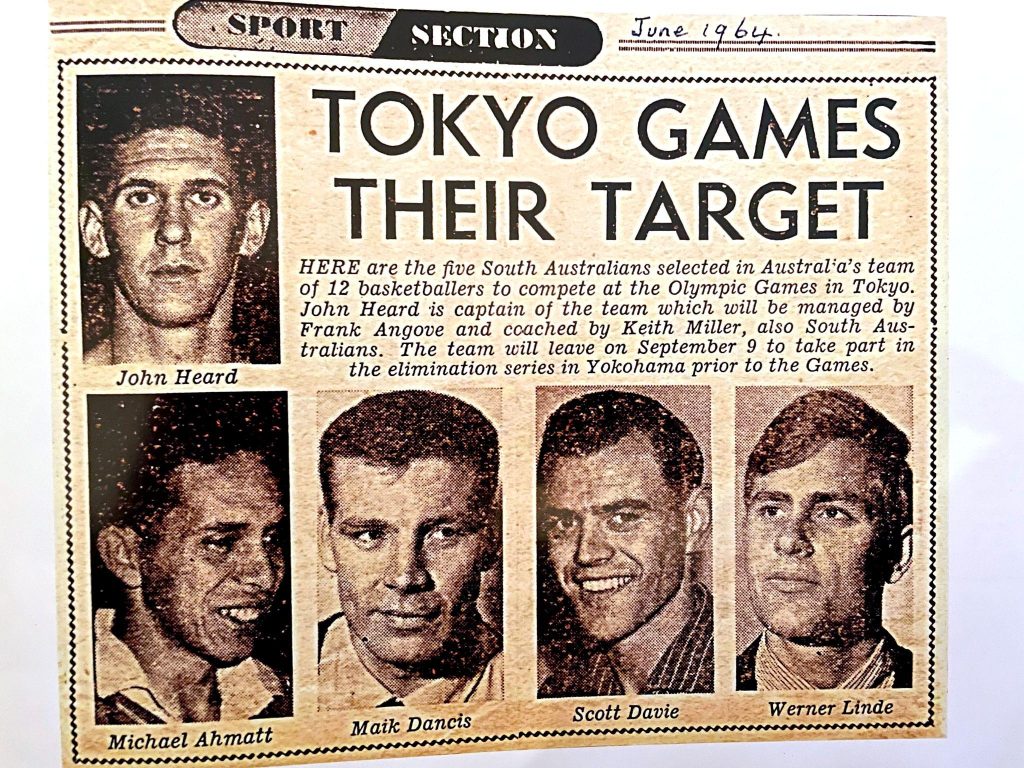The late Fred Specht may well be regarded by some as the man who put the West Adelaide Basketball Club on the map. But he was much more than that. Beginning as the Kingston Tennis club it later morphed into the West Adelaide Basketball Club.
Initially, with his nephew Dixon (Dick) Bruning, he formed the Kingston Men’s Basketball Club (KMBC) in 1940’s on the Specht’s family-owned Kingston Tennis Club property on Kingston Ave, Richmond. The tennis club was well established with a club house and five outdoor courts but in winter the courts were often too wet to play. It was during one of these periods that Fred Specht, together with his nephew Dixon Bruning, decided they should investigate the game of Men’s Basketball and they visited the Duncan Building to watch the game being played. The tennis players needed something to do to fill in the time and one court was made available for the new KMBC team to practice.
In 1946 the first Kingston Men’s Basketball team was formed to play in the
SAMBA which had recently resumed playing after WW2. The first coach and president of the Kingston Men’s Basketball Club was Fred Specht. He had outstanding success guiding the men’s team to a staggering 4 championships in 5 years. In 1948 and 1949 they won the ‘A’ grade title at the OBI (Our Boys Institute) competition and more premierships in 1951, 52 at the Thebarton Town Hall. Not only was he coaching and undertaking official duties he was also using his own money to buy basketballs and to purchase and build the first wooden backboards for the club.
In 1950 the South Australian Metropolitan Basketball Association (SAMBA) and the OBI had disputes about costs which resulted in the SAMBA breaking away from the OBI to form a new Association which was named District & Metropolitan Amateur Basketball Association. To start the new association, it was decided primarily by Frank Angove, Ted Hunt, and Fred Specht to have an eight (8) team competition and each club involved in the break-away was to assume a League Football Club name. It was considered that football followers would provide increased support for the game hence the name change.
Consequently, after much heated discussion, the Kingston Basketball Club was renamed the West Adelaide Basketball Club. This name was chosen because the Kingston Tennis Club was part of the West Adelaide Football Club area and the Specht family’s allegiance to the team, being red hot supporters. Specht consequently coached WABC to 2 more premierships in DMAB competition now located at the Thebarton Town Hall.
In 1953 the ‘A’ Grade competition moved from the Thebarton Town Hall to the new Forestville Stadium. This was a milestone in Australia as it was the first stadium purpose built for basketball. Angove, Hunt, Merv Harris and Specht, four stalwarts of SA basketball had dreamed of this moment and the time when all clubs would have their own stadium. To pursue this dream, (much against his wife’s wishes) Specht and players of the time became original debenture share investors to raise the 3000 pounds needed to build the stadium. Late in that year he moved from West Adelaide to South Adelaide to further continue his coaching career as their ‘A’ grade coach. From there more coaching opportunities arose with West Torrens ‘A’ grade teams and so he moved on.
Specht is best remembered as an administrator and an official and that is no surprise given his achievements. He became the first vice-president of the DAMBA, a position he held for an amazing 25 years (1950-75), when he retired due to ill health. As a result of an increase in junior basketballers playing the game at the new Forestville Stadium, he established a junior committee to oversee its development. He became the first president of the Junior Committee and held this position from 1953-1975. He set up the junior competitions from their infancy and was considered ‘the father of junior basketball’ in those years.
Even though he coached a variety of teams, he managed even more. He managed or coached a host of U/16 and U/18 State teams during his presidency of Junior basketball in South Australia. From senior state teams at Australian Championships to touring to New Zealand with State and combined District teams in the 1960’s, nothing was too much for him.
A fact not well known is Specht also had a hand in establishing the site of the Apollo Stadium. In the late 1960’s the DAMBA were looking for land to build a new headquarters. Fred, on his daily walks around his Richmond neighbourhood, discovered an unused block of land on Kingston Avenue. On making enquiries Specht discovered the CMV motor vehicle company had intended selling it as it no longer served their purposes. He contacted his old friend Frank Angove about the site, discussions and negotiations took place between Angove and the managing director of the car company and the site was bought. The rest is history. Fred Specht loved the site as it was only 5 minutes from his house!
Fred Specht was a pioneer of basketball in South Australia. From his beginnings in the formation of one of the State’s most powerful clubs, West Adelaide, to his hard work and diligence in the building the Forestville Stadium to his countless years in managing a variety of aspects of manging junior and senior teams he will be remembered as one of the visionaries of our sport.
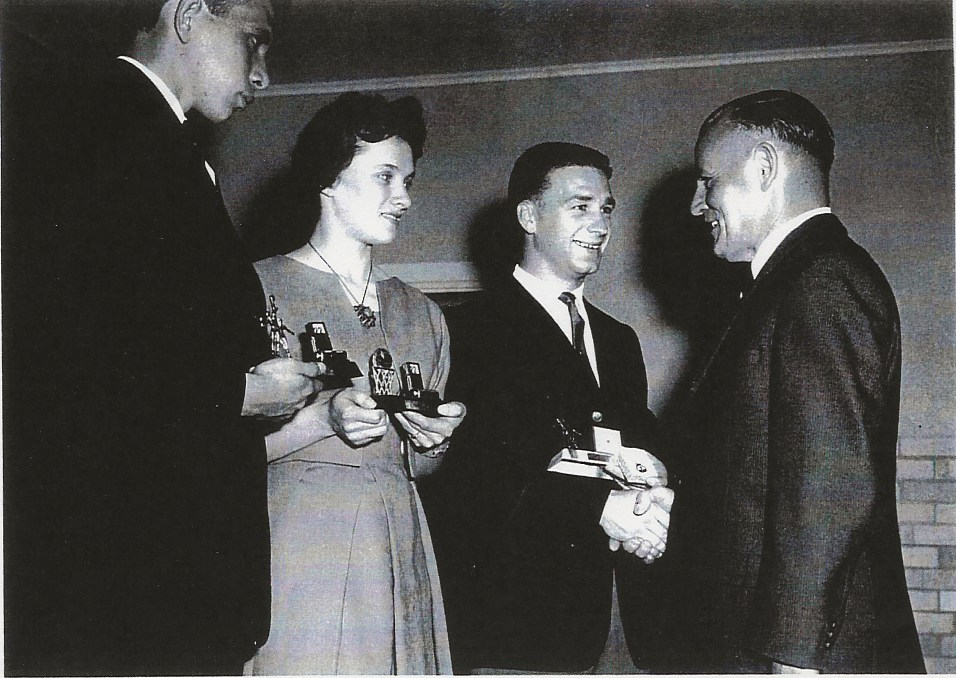


Albert Leslie
Born in Woolloomooloo, NSW Albert quickly became the pride of the town.
Starting in 1960 with the Under 16 NSW State Team, Albert continued to represent NSW consecutively until 1964 in the Senior Men’s state team. Returning for one year in 1969.
Albert made the move to South Adelaide’s Men’s team in 1965 where the team took the premiership. Albert’s success with South Australian teams continued representing the SA Senior Men’s State team in 1966 and becoming Australian Champions. Albert returned to the SA Men’s states team in 1967-68 as the Australian Runner-Ups.
Albert won the Kay’s Trophy (highest votes for U20 in the Woollacott medal, now known as the Frank Angove Award) in 1966 with his debut with United Church Men’s team. He continued with United in 1967 winning the Woollacott Medal.
1968 saw Albert make the Australian Olympic Team that went to Mexico for a pre-Olympic tournament. An incredible achievement for the young and tremendously talented player.
Albert returned to his NSW roots representing Sydney YMCA for four consecutive years in 1969, 1970, 1971 and 1972. During this time, he achieved selection in another Australian National Team this time heading to the World Championships in Yugoslavia.
The SA Men’s State Team were graced with the return of Albert in 1973 for the Philippines Tour. This tour gave the SA Men the opportunity to play against the Philippines National Team.
Forestville Eagles Men’s team carried out the final years of Alberts playing career before his venture in the coaching space.
Albert’s coaching style achieved greatness from his players. Utilising his humble demeanour, knowledge, and experience of the game he was able to get the best out of his players. As head coach Albert lead the SA Under 20 Men’s team to Championship in 1986 and stayed on with the team until 1989.
Albert’s coaching success continued with a SEBL Championship as the Head Coach of the Adelaide Buffalos. The completion of his coaching career came with Albert joining the Adelaide 36ers as their Assistant.
Outside of his playing and coaching career Albert has reach phenomenal feats becoming an Adelaide 36ers Life Member, participating in the 2000 Olympics Relay, being the first junior from Woolloomooloo to represent State’s and gain and Olympic selection. Albert is a past secretary of the Olympians club, a Basketball SA Participant Life Member and won two MVP awards as part of the Forestville Eagles.
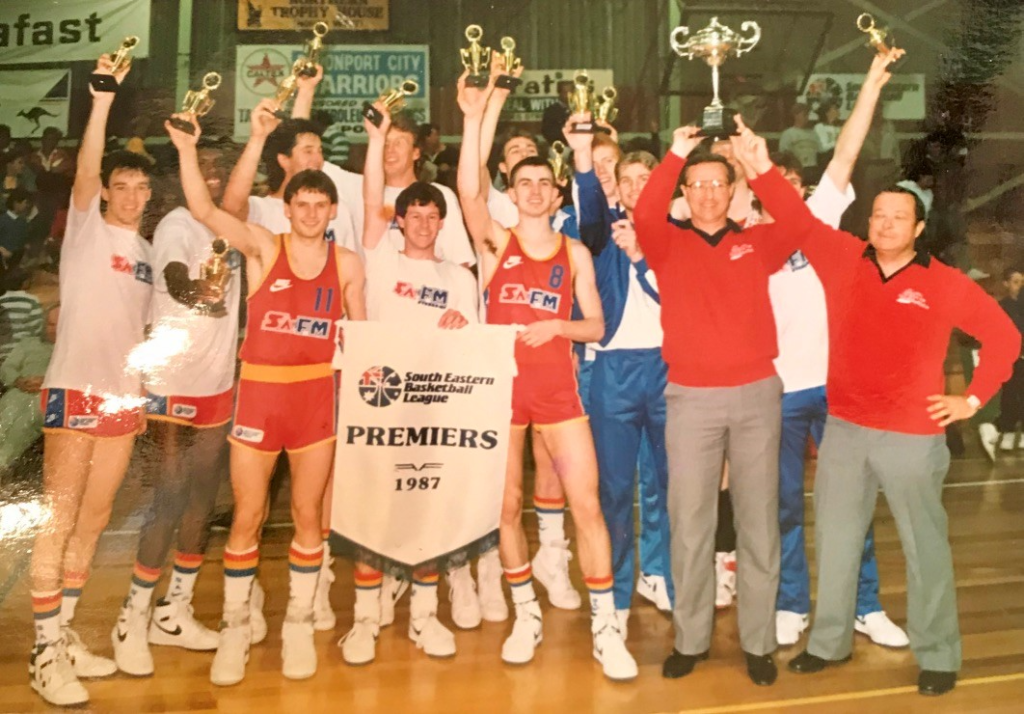
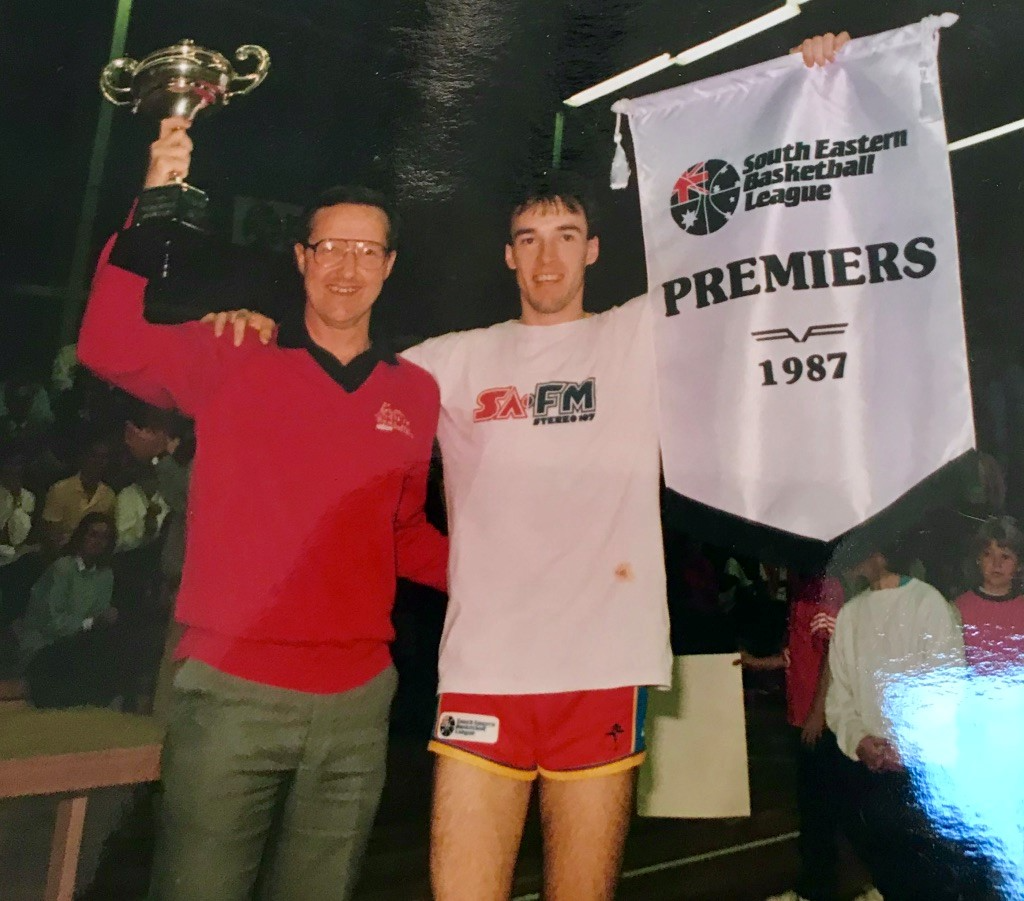
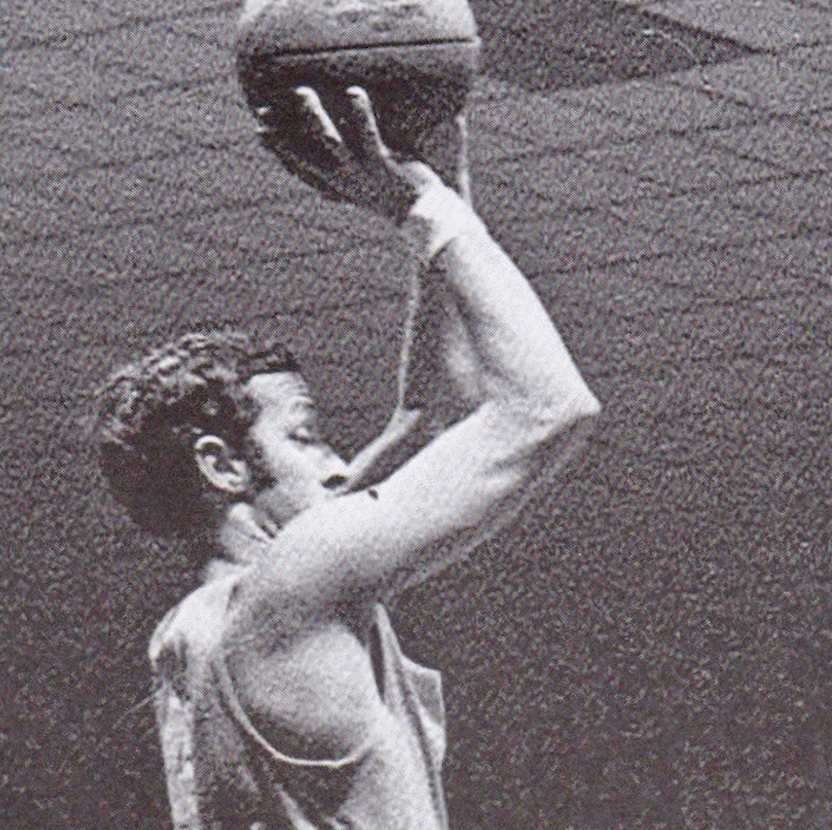
West Adelaide 1982 Mens Team
When West Adelaide Bearcats men’s team hit the hardwood in 1982, it was the culmination of five years of work that produced South Australia’s historic first national club champion.
The National Basketball League (NBL) tipped off in 1979 and the Bearcats were among its inaugural clubs, having won the SA championship in 1978. They would again go on to win in 1979, 1980, 1981 and finally, 1982 – the longest championship winning reign in South Australian basketball history.
Much of this had to do with their American-born playing-coach and inaugural NBL Most Valuable Player, Ken Richardson who arrived in Adelaide in 1974.
In 1975 he created history as the first American to claim the Woollacott Medal as the state’s fairest and most brilliant player. In his era, Richardson was the best player in Australian basketball and his decision to move from a starter’s role to West Adelaide’s sixth man was hugely influential in the Bearcats’ total domination of 1982.
A season-ending injury cost Richardson the 1981 season as a player but continued as coach, West still finished third in the NBL. In his comeback season as a player-coach in 1982, Richardson averaged 14.5ppg at 58.8% (143/243 – #2 in NBL), 6.2rpg, 1.4 apg off the bench, always able to assess what his team might be needing. For example, in the NBL playoffs he led the team in scoring with 25 points in its semi final win, then in rebounding with 11 in the Grand Final.
After losing the 1980 NBL Grand Final to St Kilda Saints and their unstoppable mercurial American guard Rocky Smith, Richardson set out to find a “Rocky of our own”. This led to the recruitment of Al Green.
Out of Louisiana State University, Green was unlike anyone Australian basketball had seen before, a scoring guard with lightning-fast reflexes, moves, skills and jumping ability. “Dr Dunkenstein” had fans filing into Apollo Stadium just to see his sizzling abilities, not to mention his penchant for trash-talk which harkened back to his New York roots. When the naturalised Richardson added Leroy Loggins to the Bearcats’ roster, it had arguably the two most accomplished imports in the NBL.
Green won the Woollacott Medal in 1982 as West Adelaide stormed to its record fifth straight SA championship, smashing Forestville Eagles 97-84 in the Grand Final.
This was West’s 17th Grand Final appearance since 1957, Green also leading the season scoring and securing a rare double by also owning the state league’s best field goal percentage.
At the other end of the floor, Loggins was busy winning the league’s Best Defensive Player award, the dynamic US duo also holding down two spots on the All Star Five (First Team).
West progressively built the irresistible force which culminated in its 1982 superiority. Two of its starters – Peter Ali and Ray Wood – both were products of the club’s junior program.
Ali in 1980 represented Australia at the Olympic Games in Moscow and was a revered defensive player. Wood won the NBL’s Best Defensive Player award twice (1980, 1981) and holds a personal milestone as the only Defensive Player award winner in the league’s history to also have produced a 40-point game. He could play both ends of the floor and was the team’s playmaking general.
Raw-boned NSW-born centre Brad Dalton completed Richardson’s starting quintet, the playing-coach’s eye for talent reinforced with Dalton winning Olympic Games selections for Australia in 1984 and 1988.
Joining Richardson on the bench were State forward and National junior rep Joe Theil and a trio of West Adelaide juniors Trevor Maddiford, Greg Mules and Peter Dawe, the latter representing Australia at Under-20 level.
This unprecedented powerhouse team was the first to include three league MVPs in Richardson, Green and Loggins. The Sydney Kings would field three league MVPs in Andrew Bogut, Kevin Lisch and Jerome Randle in 2019 but did not go on to win a championship.
Green averaged 27.3 points per game at an NBL-leading 59.1 per cent accuracy. The second most accurate player in the NBL was Richardson at 58.8 per cent. Third was Loggins, whose 25.2 ppg were delivered at 56.9 per cent – another yet-to-be repeated feat.
The Bearcats trio also all won Woollacott Medals in SA.
In its dominant NBL season, where run-and-gun backed by amazing defensive commitment but highlighted by touchdown passes out of defence for lay-ups were a regular component. West Adelaide produced a 21-5 win-loss record, an 81% success rate, and averaged 97.1ppg, conceding 83.7ppg, a winning differential of 13.4ppg. Two of its five losses were by one point and a third by two.
Loggins, with a 32-point tour de force, was named MVP of the Grand Final victory over Geelong.
Richardson was assisted by bench coach Mike DeGaris and team manager Keith Woods, completing one of the greatest teams in NBL and SA history – worthy inductees into the Basketball SA Hall of Fame in the “Teams” category.
The 1982 West Adelaide Bearcats consisted of:
Playing Coach, Ken Richardson (dec)
Assistant Coach, Mike Degaris (dec)
Al Green
Leroy Loggins
Peter Ali
Brad Dalton
Ray Wood
Trevor Maddiford
Greg Mules
Peter Dawe
Joel Theil
Garry Thompson
Manager/Trainer, Keith Woods

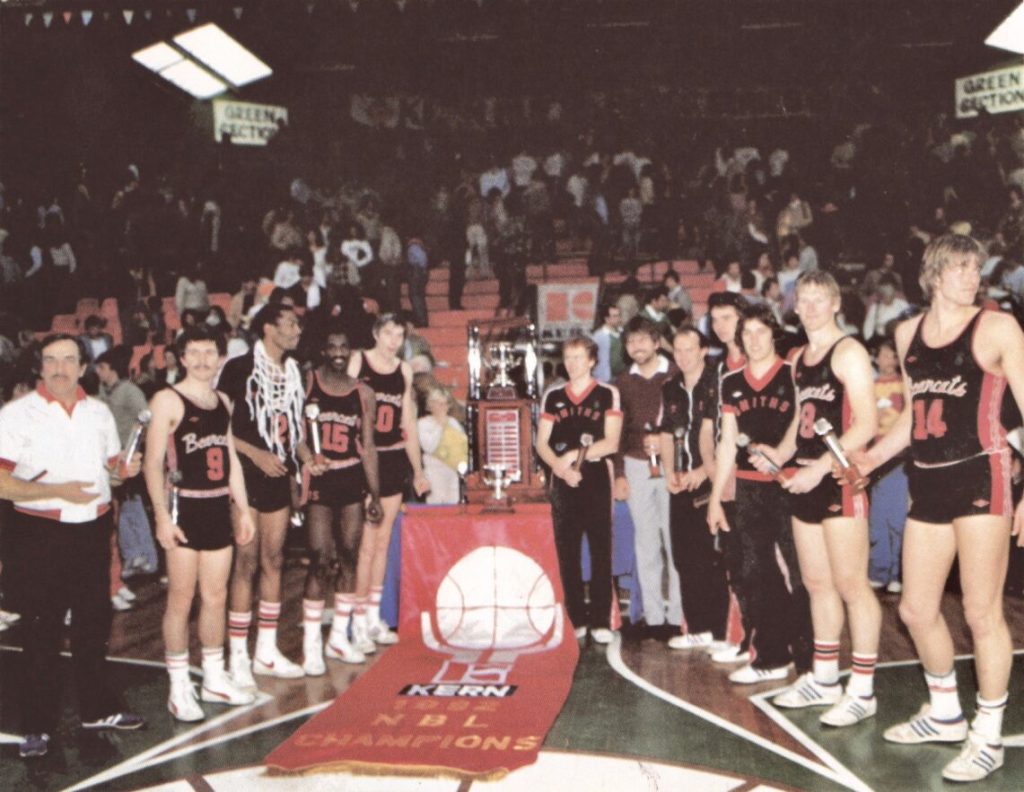
Scott Davie
Born Theodore Lisle Scott Davie on 15 February 1940, Scott Davie is a living legend of the South Adelaide Basketball Club. His legacy to the sport in general means his imminent induction into the Basketball SA Hall of Fame long has been a foregone conclusion.
Launching his career as a high-scoring and energetic guard with Grange Christian Centre in 1951 in the Uniting Church Basketball Association, Scott remained true to his church basketball roots well after his many successes at state and international level with South Adelaide, South Australia and Australia.
By 1957, Scott was playing at South Adelaide, elevated to the club’s top team in 1958 where his illustrious career with the Panthers would yield a (then) record 583 senior (or district) games, a record only surpassed by Hall of Famer and South teammate Michael Ahmatt with 588.
Scott is second too in career points scoring 6,349 points as a Panther, behind Hall of Fame legend Werner Linde.
As South Adelaide captain from 1962 to 1972 – including a year as playing-coach in 1970 – he led the club through its “golden era” which included winning a record 52 consecutive matches from 1962.
Scott was instrumental in South Adelaide’s breakthrough inaugural championship in 1963 and subsequent state championship wins in 1965, 1966, 1969 and 1973 before his retirement.
Selected 10 times from 1959 to 1969, to represent South Australia at National States Championships, Scott was a key player in SA winning titles in 1959, 1960, 1963, 1964 and 1965 – five championships in a 10-year period.
He was South Australia’s captain in its 1965, 1966 and 1968 campaigns.
His performances at the 1964 Australian championship saw him selected for the Boomers’ landmark 1964 team which competed at the Tokyo Olympic Games.
It was no easy ride either as Australia’s part-timers won their way through the pre-Olympic qualifying tournament, then finished a very credible ninth at the Olympics.
Additionally winning the Church of Christ Association’s best and fairest player award five times. Scott coached multiple Church Basketball teams, fostering the talents of South Australia’s youth, including fellow Hall of Famer and Olympian Darryl Pearce.
Post-playing days, Scott stayed involved at the highest levels as team chaplain of the Adelaide 36ers’ NBL team from 1992 to 2006.
South Adelaide retired his famous #5 uniform in honour of his extraordinary service and contribution to his beloved Panthers club and when the famed Apollo Stadium closed its doors after being Australia’s premier basketball venue from 1969 to 1992, Scott Davie was named in the top 10 men’s players to ever compete at the historic venue.
